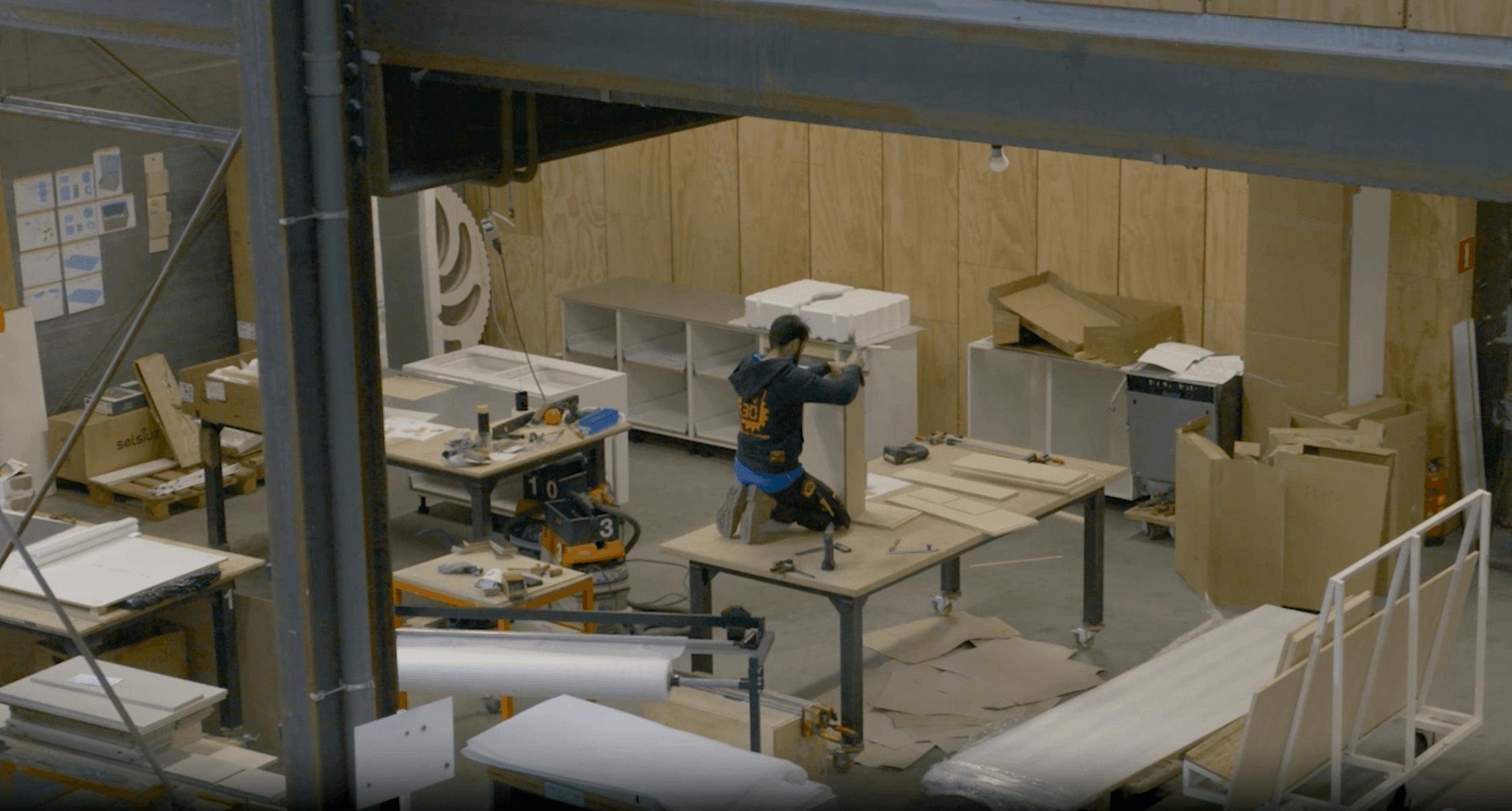Imagine revolutionising woodworking with AI, robotics, and computer vision to transform discarded wood into bespoke artworks, enhancing efficiency and craftsmanship through human-robot collaboration. Or envision an adaptive robotic membrane that embraces collision, using body language to foster cooperation, thus enhancing safety and functionality with innovative material intelligence.
These were Marielena Papaendrou and Anna Schaeffner's visions when they applied for a VOJEXT Artist residency over a year ago. As their residencies conclude, we reflect on their unique approaches, which earned them nominations for the prestigious S+T+ARTS Prize.
Each year, the S+T+ARTS Prize, an initiative by the European Commission, honours two outstanding projects, ten honorary mentions, and 18 nominations. It celebrates innovative collaborations at the intersection of Science, Technology, and the Arts. In 2024, out of 1,308 submissions from 81 countries, two VOJEXT residency projects were among the 18 nominations.
"GR-AI-N" by Marielena Papandreou
Mentored by Robotnik (Spain) and Waag, Marielena Papaendrou's GR-AI-N project in Barcelona aimed to revolutionise the use of discarded wood using AI, computer vision, and robotics. By scanning wood for its natural properties—grain patterns, textures, and imperfections—she crafted designs that align with the material's natural shape, maximising resource utilisation, reducing waste, and preserving the wood's narrative.
Marielena remarked, “So, yeah, using robots is not a new way to process materials. But we can inspect matters unprecedentedly by adding new capabilities to these robotic platforms and finding creative applications, as we did in this project.” GR-AI-N redefines furniture craftsmanship, supporting sustainable practices and offering scalable solutions for various industries. It advances robotic manufacturing research focusing on high-resolution scanning, adaptive robotic manipulation, and waste utilisation in design.
This project is particularly interesting for Waag as it builds on connections to other European projects. For instance, in the Reflow project, scanning technology was used to catalogue labelled wood waste, aiming to reuse and prolong the life of materials. Similarly, the Better Factory project involved developing improved nesting algorithms to minimise wood waste and generate new shapes from leftover cutouts.
GR-AI-N showcases sustainable practices enhanced by technology, fostering a meaningful relationship between craftspersons, automation, and technology. Marielena's efficient workflow for handling irregular wood offers a versatile solution for various industries, emphasising scalability for larger projects like construction waste and the ability to add value to discarded materials, enhancing carbon capture and sustainability.
"Soft Collision" by Anna Schaeffner
Berlin-based Anna Schaeffner, mentored by Fondazione Istituto Italiano Di Tecnologia (Italy) and Waag, developed Soft Collision, which will be exhibited at Ars Electronica Festival. This project redefines human-robot interaction by viewing collisions as opportunities for safe communication. The innovative design features a deformable, pneumatic membrane enhancing manipulation and live programming, making interactions more intuitive and inclusive.
Anna noted, “I would say the richest moment in the collaboration was when we all were in the same room and could exchange our different visions. The way I see the role of the artist in the industry is bringing a little bit more freedom in these disciplines. In this residency, I felt free to experiment with material and how we usually worked and interact with robots.”
Collaborations with artists, performers, and technical experts from UPM, Nebrija, and IIT were crucial. The membrane equips autonomous robots with flexible sensors and air channels for softer, safer interactions, providing non-verbal feedback to build trust.
Tech mentor Francesco Rea reflected, “And working with the artists also brings this point of view in what we do in the Institute and specifically for what we do in our group. So, we should try to understand how human-robot interaction can improve, then improve the possibilities and give us a better chance to understand the future and how humans can work with robots. I must say that, for me, this was like the beginning of the path toward a multidisciplinary approach. And I think that something else has to come after this project. And I wish that something else comes. And the reason is that we barely scratched the surface.”
Soft Collision could revolutionise safety in human-robot collaboration by transforming collisions into opportunities for close, safe interaction. This approach enhances user experience and promotes a new perspective on human-machine interaction. From an industrial standpoint, the project underscores the importance of integrating controlled collisions to optimise productivity and build trust between workers and robots. Introducing dynamic, adaptable materials like silicon membranes opens new possibilities for interaction principles and improves overall safety in human-robot environments. Additionally, the project's exploration of non-verbal communication through body language further enhances safety and interaction, drawing on natural and biological movements to subtly shift our interaction with robotic systems.
Transformative Power of Art and Science Collaboration
These VOJEXT residencies offer new insights into science and technology. They showcase how artistic research can drive innovative solutions when provided with the right resources and conditions. Both projects highlight the potential of integrating art and technology to create meaningful, sustainable impacts in their respective fields. Through these residencies, the creative use of robotics in art projects has motivated the industry to explore new functionalities and envision future possibilities for robotics. At the same time, artists gained access to cutting-edge technologies, actively contributing to technological advancements.
At Waag, we believe bridging the gap between art, science, and technology is vital. Tackling today’s challenges requires moving beyond disciplinary boundaries and encouraging interdisciplinary exchange and cooperation. The exceptional work of Marielena Papaendrou and Anna Schaeffner exemplifies the power of such collaborations, leaving us eager to see what the future holds.
Project VOJEXT
VOJEXT, an EC Horizon-funded project, aims to advance robotic systems for industry, focusing on human-robot interactions in manufacturing, construction, and the arts. The VOJEXT S+T+ARTS residencies foster art-driven innovation and deepen societal understanding of human-robot collaboration. Waag Futurelab (Waag), a long-standing S+T+ARTS Prize partner, coordinated and mentored the VOJEXT residencies.
Please review our research update article on the VOJEXT project for more details and video material on the broader impact and methodologies.


